This June, the MACMA team put our backpacks on our backs and went to explore some fortified churches and watchtowers in the Marina Alta. A tour that will allow you to get to know the points most related to piracy on the coasts of our region. This experience is designed to be done by car, motorbike between the different towns and by walking or by bicycle within the towns and proposed routes. We will learn history in a different way. An itinerary divided into two days and 8 municipalities to discover. Village by village, we will go from the coast to the interior, visiting the most emblematic elements related to the world of piracy. Stay with us and we will reveal the history and curiosities of the towns and landscapes we have visited on this excursion, which we have enjoyed and now we hope you will too.

A BIT OF HISTORY. We know where we come from to decide where we are going.
We enter June and with it, the good weather and the desire to go to cool off in the sea. The guiding thread of the excursion we propose will be a part of the history that has marked/characterized the population of La Marina and its customs.
The Marina Alta and its people have always had a relationship with the sea: On the one hand, fishing fed the population, on the other hand, it was a source of danger, both from storms and swells and from piracy . This has been present for many centuries on our coasts, although it intensified its presence from the 16th to the 17th century, these are not the first attacks we have received. Pirates and corsairs are as old as men and piracy at sea has been around since the art of navigating the seas and oceans was discovered. Specifically, in the Mediterranean we have evidence of this activity since Classical Antiquity.
First, before we dive into the story, we need to understand some concepts. Corsairs and pirates are two different figures. On the one hand, pirates were considered bandits of the sea who attacked ships and boats without rules or laws. Your goal? Loot and take captives. Generally, they captured ships and in the case of disembarking, they stole, looted and kidnapped people to later sell them as slaves or collect a ransom for them. On the other hand, the corsairs did the same actions as the pirates but with an apparent legality, since they had the patent of hearts, a permission from the king that gave them 'bulla' to attack enemy ships of his kingdom. Over time, this small difference was erased until they were considered equal. Their origin was very diverse (Arabs, French, Valencians, Castilians, Catalans, Genoese, Portuguese, etc.), but those who represented the most danger on our coasts were those from North Africa, since they were the most persistent in time and the closest they were.
As for the defense of the territory, they only had to defend each other. Their options were reduced to taking boats and chasing them, or building fortresses, towers, strong houses and walls, added to a constant vigilance to anticipate possible attacks. Even so, for a long time the defense was very poor, only having a few lookouts and a few fortifications. It is not until the accession of Felipe II to the throne, when the first reports were made about the fortification of the Kingdom of Valencia and as a result of these, watchtowers and fortress-churches were built that could also be used for surveillance and defense
Attacks on our coasts are more frequent and intense in the 15th and 16th centuries, but they were not the first. In the 14th century, two attacks are recorded on the coast of Benissa by the Moors of Morocco and the town of Xàbia attacking with galleys and azaures. In the following century the landscape changes a lot. It is the century in which more letters are sent from Dénia, Calpe and Teulada to Valencia, warning of piracy on the coast. A total of 130 registered letters from the High Navy warning of possible attacks. With such a large number, Dénia chose to give many licenses to corsairs so that they would protect the territory and its population. Attacks were quite frequent, as the only surveillance mechanism was the lookouts and they were not effective enough against such a high number of enemy ships.
In the 16th century, a series of events will make it a very complicated time for the Kingdom, marked by the most intensified attacks in the history of piracy on our coast. This increase in number and dangerousness is related to two other relevant historical facts that influenced their presence. On the one hand, Charles V was at war with the Ottoman Turkish Empire, which was allied with Algeria, in North Africa. Both Algeria and the Turkish empire had a large pirate fleet and their attacks in the Mediterranean were constant.
On the other hand, after a long time of confrontations and discrepancies between Christians and Moors, the situation began to worsen. The distrust between the two communities was of such importance and the pressures on the king such that eventually the Moors were forbidden to go to the coast, as there was a belief that the Moors were allies of the pirates of the Turkish Empire and Algeria and they helped them disembark. Meanwhile, in North Africa there were two figures who were gaining more and more strength to attack the coasts, we are talking about the pirates and corsairs Cachidiablo and Barbarroja, two of the most important in the history of piracy. Both in 1518 devastated the coasts of the Mediterranean Sea, from Badalona to Alicante, attacking with timber and galleys. One of the towns that was attacked that year was Dénia.
A few years later, in 1522, the Germans revolted. Christians begin to perform illegal baptisms on Muslim vassals who lived under Christian rule. A short time later (1525), a board of theologians would validate these forced baptisms and it would be forbidden to practice Islam, forcing them to abandon their religion, changing their Muslim names and calling themselves Moorish or New Christians, considering of Mudejars This led to an increase in the unrest and discord of the Moors to the point of wanting to flee to Africa with the help of pirates and abandon their strongholds in towns such as Parcent, Murla, Vernissa, Benigembla, Alcalalí or Mosquera. Just a few years later, in October 1529, one of the most significant attacks in the history of our coast took place, led by Cachidiablo and the famous pirate Barbarroja - it was the only time that pirates went so deep into the interior – entering through the Olla d'Altea, following the river until reaching Murla and Parcent, where they razed and looted the towns. In addition, the pirates left the Aljama de Murla completely depopulated, as they helped 600 people flee with them to North Africa. They also fled with the pirates, Moors from Parcent, Benigembla, Vernissa, Alcalalí and Mosquera and other Christians who were kidnapped to sell them as slaves or ask for ransoms.
The attacks persisted and in 1548 the Battle of Calpe took place, where the Valencian Vicent Peñarroja armed galliots in Xàbia to pursue the pirates until victory. Two years later, the well-known pirate Dragut tried to disembark a thousand barbarians near Benissa, but failed. In 1554 Dénia suffered an attack which was the turning point for deciding to reinforce the castle walls and prepare them for the new war techniques. On September 9, 1556, 10 galleys arrived on the coast of Xàbia, finally the Algerian corsairs were unable to attack and turned away towards Dénia. At the end of this century, in 1585 soldiers from Benissa and Xàbia fought against 6 galliots near Cape Prim.
The new century only begins, in 1600 Calpe is attacked and plundered with three Moorish frigates. Thirty-seven years later, the Moorish ships attack Calpe again, capturing 400 people. The beliefs that the Moors helped the pirates only increased, this mistrust together with other causes determined that in 1609, Felipe III signed the decree authorizing the expulsion of the Moors from all the peninsular kingdoms, causing the Marina Alta will lose almost 80% of its population. Following this massive depopulation, the inhabitants of the Balearic Islands came to repopulate. But, after the expulsion of the Moors, the pirate attacks did not disappear. In 1667, two ships (Sant Joseph and Santa Clara) were going from Italy to Cádiz to stock up on barley and grain, but at the height of Moraira, Barbary pirates managed to run them aground, causing them not to arrive to your destination.
Finally, one of the strongest attacks suffered was on October 22, 1744, when almost 1000 people were attacked in Calpe. For this historical event, the municipality celebrates the Moors and Christians festival in honor of the Holy Christ of the Sweat, remembering this assault. Although there were still pirates on the coast, in the 17th and 18th centuries a big difference can be seen from the previous ones. Little by little the attacks decreased in frequency and virulence, since in 1552 different reports were made for the defense of the coast and as a result of these, Felipe II ordered the construction of different watchtowers and the fortification of some coastal towns
The watchtowers formed a continuum along the Valencian coast to keep an eye on the sea. All communicated with each other and with the military centers of Dénia and Vila Joiosa, so that they were visually connected so that from one tower you could see the previous and the next. In Marina Alta there were a total of 9 towers of which only 7 have survived. The communication system between these was through bonfires. During the day, the towers lit fire three times a day to warn that there were no pirates in sight, but if there was a possibility of attack, they made smoke signals to warn each other. At night the system was different, if the watchtowers caught fire, it was to warn of a possible attack.
Apart from the watchtowers, the so-called fortress-churches were also built, a type of building that combined military and religious functions. They are characterized by the abundant presence of defensive elements in their structures such as walls, towers, forts and using bell towers as watchtowers.
As we have seen, pirates and corsairs have been part of our history for many centuries, making our culture and heritage partly characterized by these attacks.
Curiosities:
- Expression: "There are Moors on the coast".
- Expression: "You're scarier than a Moorish frigate."
- Muslim pirates were on our shores until 1830, when France conquered Algeria and ended the focus of piracy in the Mediterranean.

PROPOSED DAYS. Step by step we are making our way.
This month we propose an experience to enjoy the good weather, the Mediterranean Sea and its relationship with the Marina Alta and we propose to combine visits to emblematic spaces with hiking and urban routes. Following in the footsteps of the pirates, we will discover eight towns in our region. The sea, towers, forts and churches will be the protagonists in the month of June. Come with us to discover them.
To start this adventure we will go to Benissa . The population center of Benissa is concentrated inland, but, even so, its municipal area (the largest in the entire region, with 69.7 km²) reaches the coast, which is why it suffered several attacks of the pirates
We will leave the car in the parking lot on Avinguda de la Constitució and from here we will take a walk through the town and visit the Placeta de l'església vella where the church-fortress of Sant Pere was located. It was built in the 16th century for the celebration of Christian worship, but with clearly defensive functions due to the frequent pirate raids that occurred during this period throughout the Mediterranean coast. In the 1940s it was demolished and today we can observe a replica of the large entrance door to the church.
From here, we'll stop for breakfast and recharge with the salty cakes offered by the bakeries and bars in the municipality. We prepare with our rucksack and mountain shoes because the next stop is a hiking route, the PR-CV 7 Bèrnia . We will leave the car at the houses in Bernia next to the restaurant. A route of high difficulty that passes through a very important space during the reign of Felipe II, the Fort of Bernia . Built in the 16th century to defend the coasts from Berber pirates, and later demolished. On this route we have two options, we can reach the Fort of Bèrnia and return the same way or take the circular route and enjoy the Cave Paintings , the Hole or the Fountain of Bèrnia .
 Bernia Fort - Benissa
Bernia Fort - BenissaOnce we return to the car, we will head to Calpe , to the car park on Carrer Ausiàs March. The cliff of Ifac, Oltà, the morro de Toix or the natural bay are some of the most outstanding natural spaces in this municipality. Continuing with the defensive structures, we will visit the Torreó de la Peça , a walled farmhouse between the 13th and 14th centuries and reinforced in the 16th century due to continuous attacks by pirates.
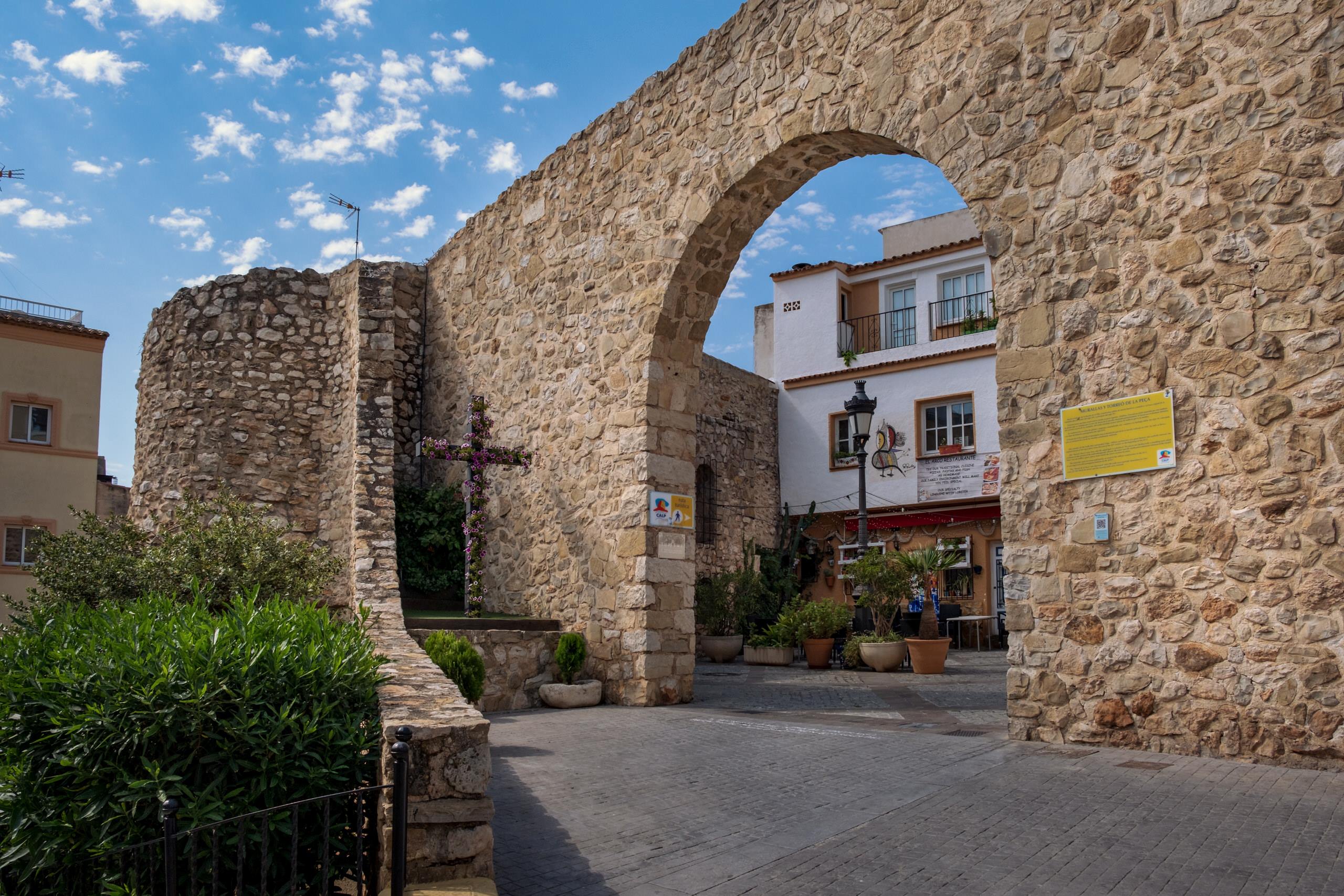 Torreó de la Peça - Calpe
Torreó de la Peça - CalpeThen we will go down to the Arenal beach, an ideal place to reserve an arros del señoret, a dish originating in Calpe and so called, as the fish and seafood is peeled so as not to get your hands dirty. After lunch, we will walk along the fine sand of the beach until we reach the Salines de Calpe. A saltwater lagoon full of flora and fauna. 173 species of birds have been detected, including the flamingo, the common grebe and the seagulls. In the direction of the Ifac cliff, we will continue walking to the Llotja , a place where the sailors expose their fishing to the buyers who bid for the trays that interest them. Two-storey building where we can see all the fish that arrives in Calpe and with which they make arros del señoret and other typical dishes of the municipality, such as la launa or blanquet.
Lastly, we cannot leave this town without knowing the history of the Town of Ifac . It is a town of the 13th century, a walled enclosure with its rooms, warehouses, houses and its church, fortress, designed to repel artillery attacks and prevent the Moors from becoming strong in the mountains, as pass in 1525. In addition, it served to control and prevent possible piracy attacks. Life in the village was short, in 1612 it was abandoned and disused to prevent it from being a refuge for bandits. There is currently nothing left of her.
Next, by car we will go to Teulada Moraira , specifically we will head towards the population center of Teulada to visit the fortified church of Santa Caterina , located in Plaça d'Espanya. Its construction began in 1582, after receiving an attack by pirates, later, in the 18th century, a series of extensions were made to transform the temple in the 17th century. Its purpose was defensive and liturgical, although today we can only observe a few defensive features, such as some section of wall.
 Santa Caterina Church - Teulada
Santa Caterina Church - TeuladaBy car, we will go to Moraira, a coastal area where we can find the Torre del Cap d'Or or Torre del Cap de Moraira. One of the watchtowers that were built in the 16th century to defend against attacks by pirates and corsairs. With a perimeter of 26 meters and a height of 11 meters, this shows the need that the region had to build a network of towers on the coast to protect the public.
We continue our visit to the architecture left by the passage of pirates on our shores with the Castle of Moraira . Built in the last era of piracy, in the 18th century. Next to the castle we find a small hermitage and a well, which was used to supply water. The fortress was restored at the beginning of the 80s. To close the day and the visit, in the castle we can see an exhibition about the watchtowers in the time of Felipe II and an audiovisual about the sea and piracy.
To end this day, we will visit the municipality of Xàbia and its emblematic buildings. By car to the Cap de Sant Antoni Lighthouse , where there used to be a watchtower. A privileged place, 160 meters above sea level and the closest point on the peninsula to the island of Ibiza. The tower, built to defend against Barbary piracy, was demolished in 1855 and replaced by the current lighthouse.
Afterwards, we will go down to the town center to visit the church of Sant Bertomeu , built in the 14th century and extended in the 15th century due to the increase in the population and the attacks of corsairs and pirates. We will be able to see perfectly the architecture used in the time of the barbarians and all its details, since it is one of the best preserved fortresses on our coast.
The municipality of Xàbia also preserves two watchtowers built for the surveillance and defense of the locality, but these two are located in two private spaces and are not easily accessible. We are talking about Torre del Portitxol or Cap Prim and Torre d'Ambolo or Torre del Descobridor. The latter can be seen from the viewpoint of Castell de la Granadella.
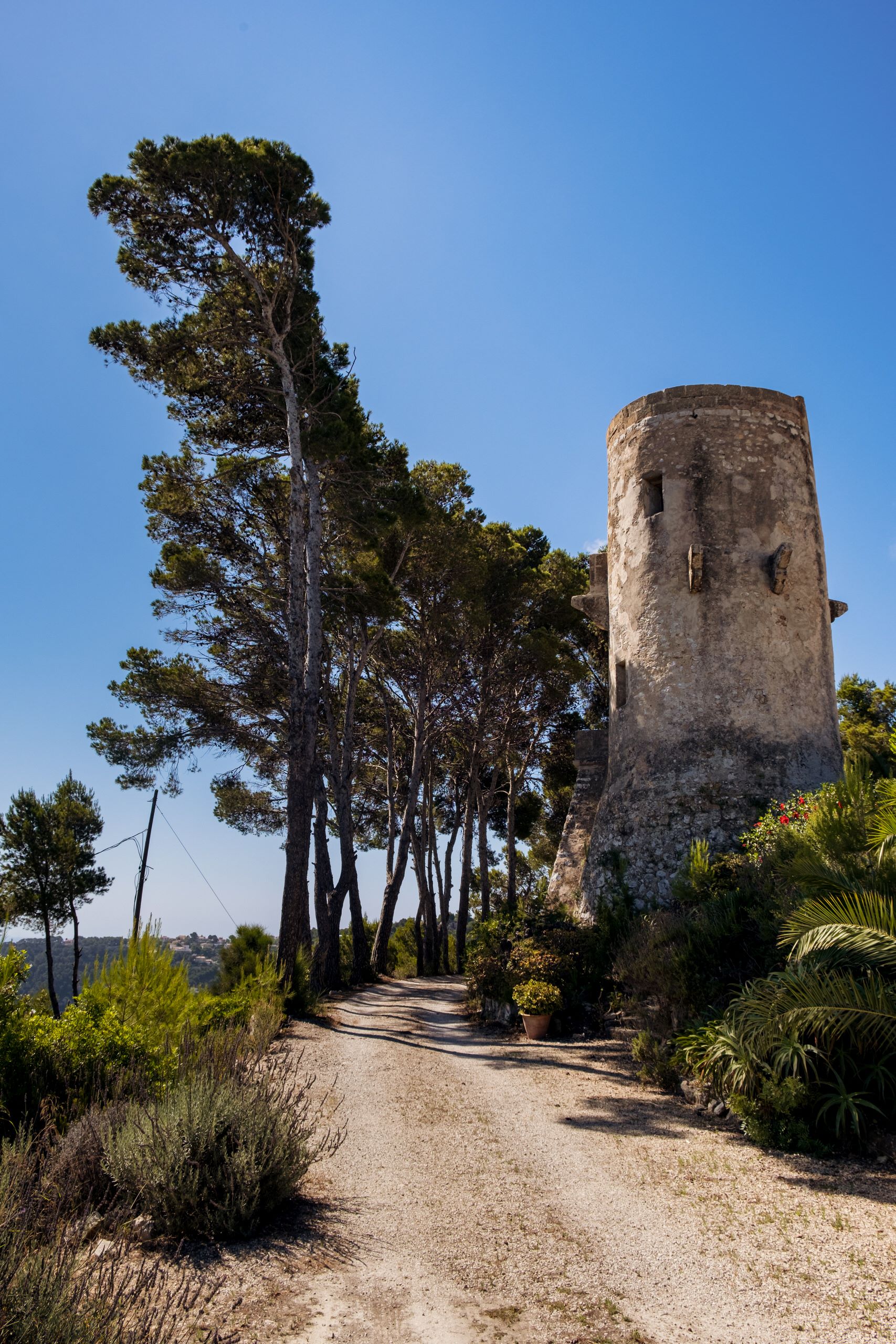 Torre del Portitxol - Xàbia
Torre del Portitxol - XàbiaTo end the day, we will go to the port of Xàbia, walk along the promenade and visit the craft market that is held in the port every day during July and August and every Saturday and Sunday the rest of the year. An amazing place to end the day, see the work of the artisans, hear the sound of the sea and feel the fresh air as the sun sets on the sea.
On the second day of this experience, we will continue visiting spaces and buildings built in the era of corsairs and pirates, but this time, we will start the day from the interior. Yes, the pirates didn't just stay at sea, they often managed to disembark, enter the villages inland to loot them and take their inhabitants captive. One of the times the pirates went deeper was in Parcent and Murla, one of the towns we are going to visit on this day.
We will leave the car at the Costera de la Font de Parcent car park and take a walk around the small inland town, especially the church of the Immaculate Conception , built in 1638 on top of an old temple that was destroyed by the revolts of the expulsion of the Moors in 1609. It was a small temple and several extensions have been made over time. To expand on the history of this municipality, we can also visit the Ethnological Museum called the Cooperativa Agrícola el Progrés , an oil mill created in 1915 for the production of oil and wine.
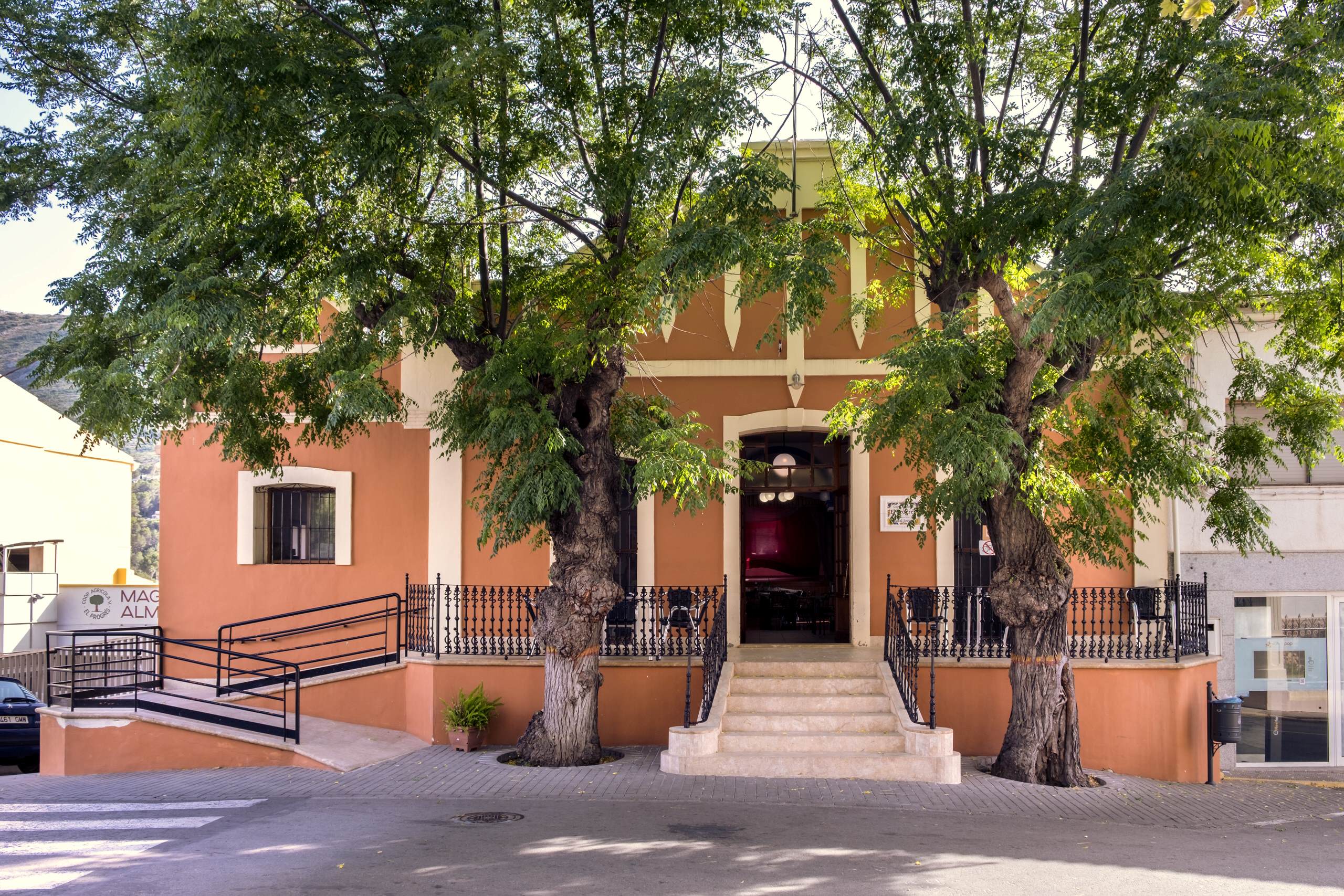 El Progrés Agricultural Cooperative - Parcent
El Progrés Agricultural Cooperative - ParcentTo go to the next village, we will take the hiking route of Stone and Water Paths . This is a route that connects the towns of the Vall de Pop, but in this case we are only going to do a low difficulty part, 3 kilometers long and 1 hour and 15 minutes to go from Parcent to Murla .
The second town we will visit on this route, located in the middle of the valley and in the basin of the Gorgos river. Even being located inside the Marina Alta, it did not escape pirate attacks, since in 1529 the crew of the pirate Barbarroja reached Murla. One of the most emblematic buildings of the town and characterized by the combination of a religious and a defensive function, is the church, fortress of Sant Miquel , which became the center of military operations for the royal troops during the revolt Moorish, you can see defensive elements such as loopholes and walls. The church was built between 1530 and 1545 on an Andalusian castle, it has subsequently been restored several times.
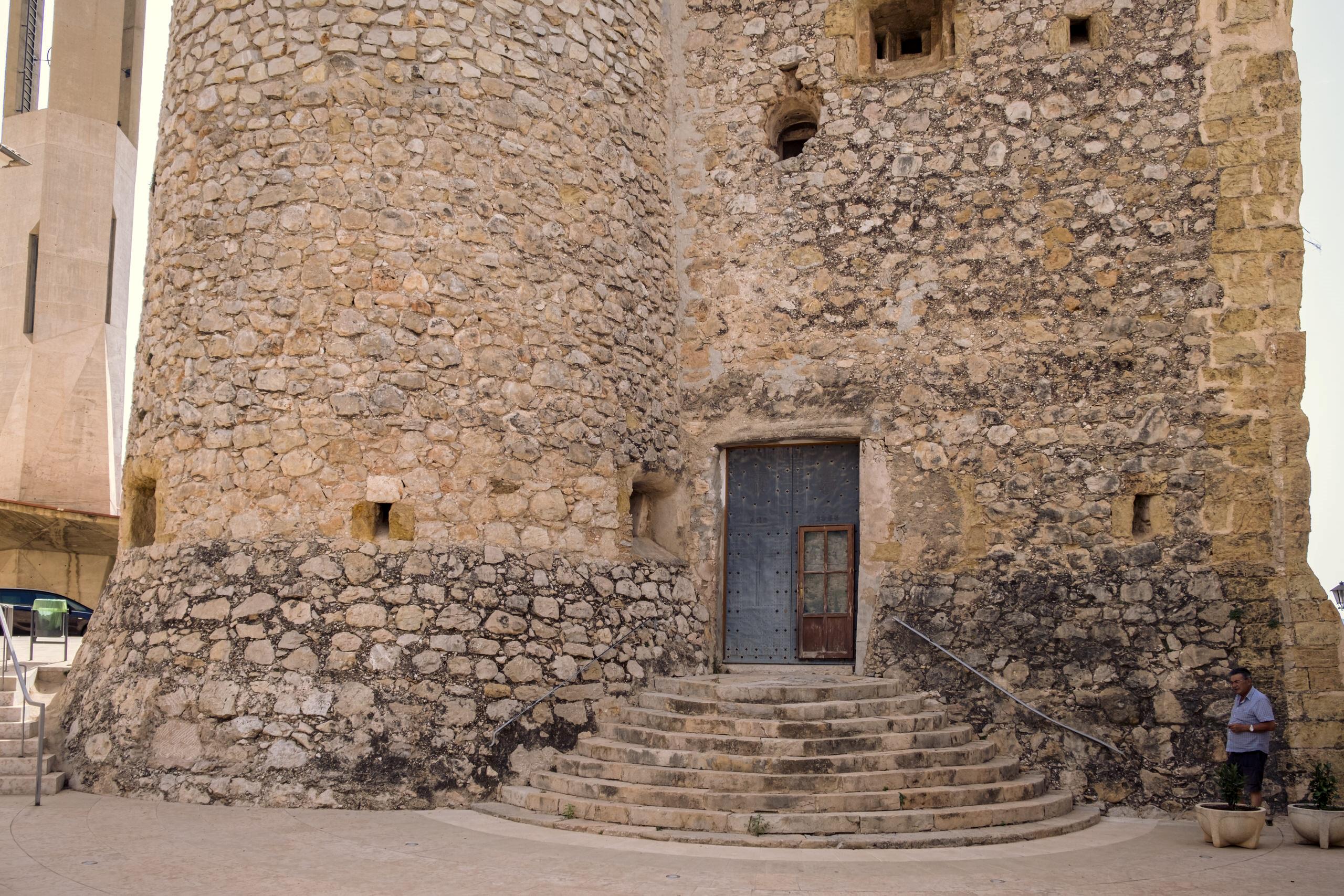 Fortified Church of Sant Miquel - Murla
Fortified Church of Sant Miquel - MurlaIn addition to the church, we can visit its laundry room that is right behind it, the old Murla laundry , very particular because the source that supplies water is 100 meters away and, therefore, the water must channel under the village houses. Later, another washing machine was built next to the source, the new Murla washing machine .
Again, we will return to Parcent to take the car and head to Platja l'Almadrava dels Poblets , where we will have lunch in one of the restaurants on this stone beach and then walk until we reach the Almadrava tower . also known as Torre del Palmar, built in 1552, next to the mouth of the Girona river. This tower, built with the aim of defending the coast from pirates, is the northernmost in the province of Alicante.
 Almadrava beach - Els Poblets
Almadrava beach - Els PobletsWhen visiting this defensive tower from the 16th century, we will first drive to the Torre del Gerro , also known as Torre d'Aigua Dolça, located in the municipality of Dénia . It is a 16th century military lookout tower. This was part of a defense system around the Montgó, made up of three towers (only this one remains standing). In 1972 the Dénia City Council ordered to rebuild it to turn it into a cultural interest of the municipality.
Finally, with the car we will go to the residential center of Dénia, a coastal town in the Marina Alta. There we will take a charming walk through the squares and corners of the Baix la Mar neighborhood , one of the oldest in Dénia, located between the port and the castle walls. The latter we will also visit the Castle of Dénia , its design dates back to the Islamic era, between the 11th and 12th centuries. The Muslims took advantage of the old Roman constructions. In the 16th century, at the initiative of the Marquis of Dénia, the castle was renovated and fortified in the face of the constant threats of incursions by Barbary pirates. During the War of Succession it was very deteriorated and, as a result, it was practically abandoned until the beginning of the 19th century, when it was left in an advanced state of ruin. In 1958 they began the restoration work that has left the fortress in its current state.
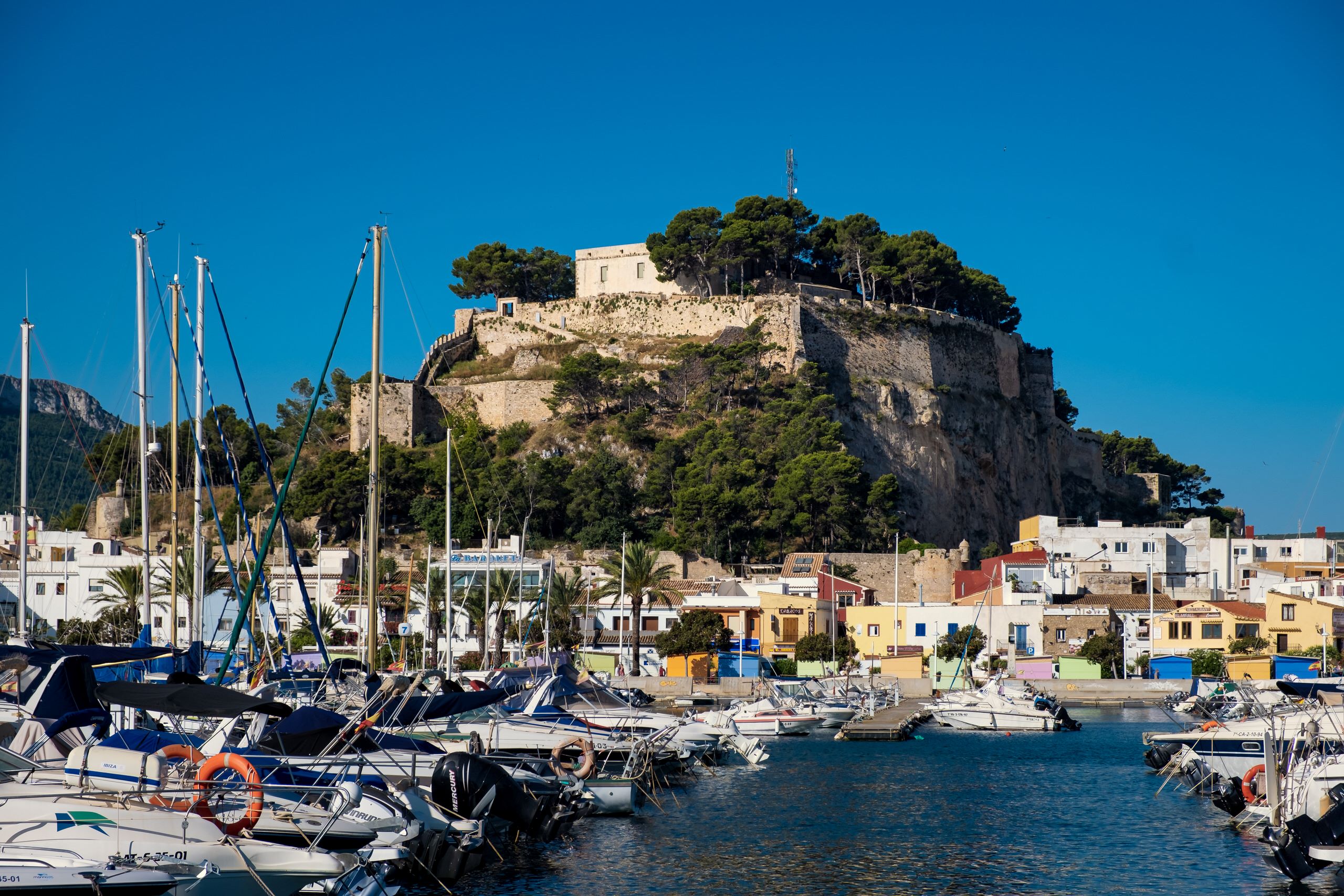 Port and castle of Dénia
Port and castle of DéniaTo finish this experience full of history, we will take a walk around the neighborhood of Les Roques , walking through its streets and where we will be able to taste two of the traditional foods of the town, the octopus and the dried melva.
**This experience is designed to be done over two days, either consecutively or on two different days. The MACMA team proposes routes, spaces and buildings to visit, but each person can adapt the experience to their abilities, physical resistance and interests. If you want more information or things to visit in each town, you can go to the Descobrim la Marina Alta website and adapt the experience to your tastes with your backpack.

AND MORE. On the table and in bed at the first cry.
 Where to buy |  where to eat |
 where to sleep |  Activities and others |